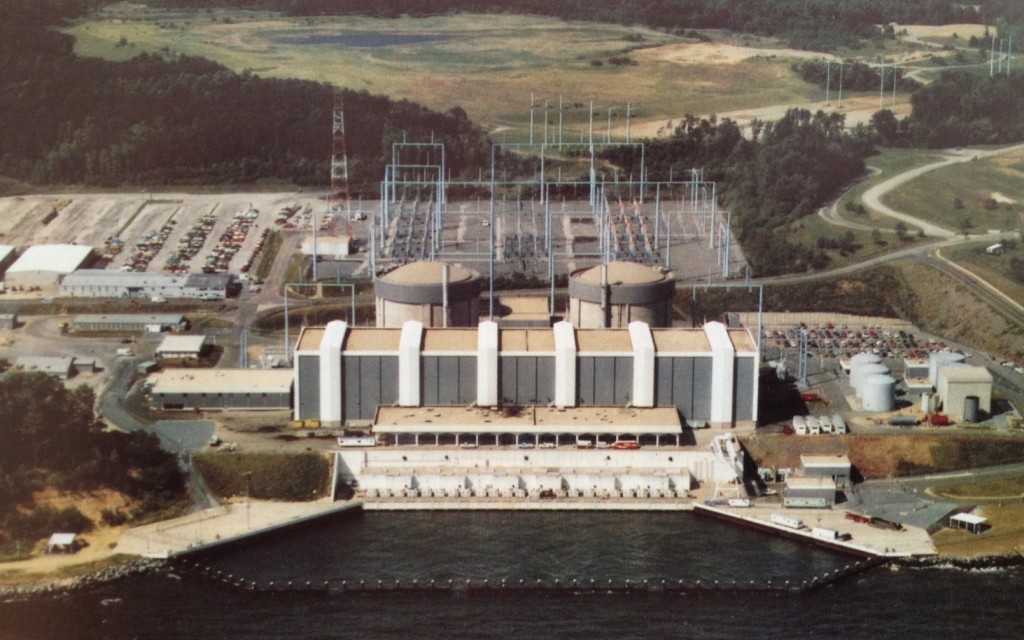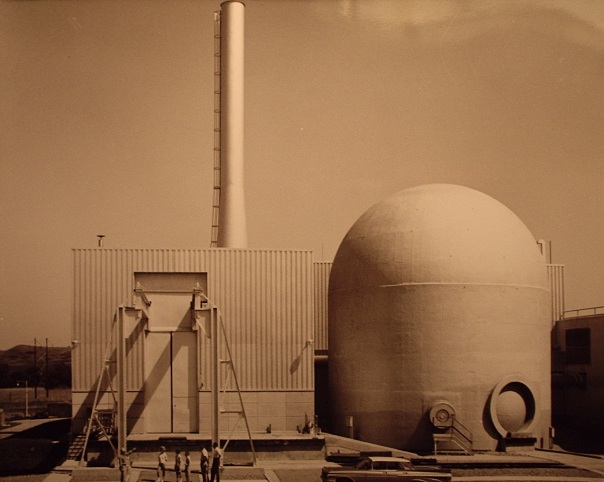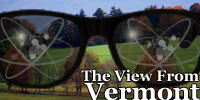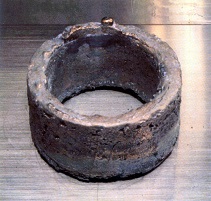Nuclear Energy Blog Carnival 216
 The 216th edition of the Carnival of Nuclear Bloggers and Authors is posted at Next Big Future. You can click here to view this latest installment of a long running tradition among pro-nuclear authors and bloggers.
The 216th edition of the Carnival of Nuclear Bloggers and Authors is posted at Next Big Future. You can click here to view this latest installment of a long running tradition among pro-nuclear authors and bloggers.

A message from NV5, Inc.
Seconds Matter: Rethinking Nuclear Facility Security for the Modern Threat Landscape
 The 216th edition of the Carnival of Nuclear Bloggers and Authors is posted at Next Big Future. You can click here to view this latest installment of a long running tradition among pro-nuclear authors and bloggers.
The 216th edition of the Carnival of Nuclear Bloggers and Authors is posted at Next Big Future. You can click here to view this latest installment of a long running tradition among pro-nuclear authors and bloggers.
Recent scandals at the U.S. Department of Veterans Affairs (VA) and General Motors (GM) have struck a chord with the media and the American people because they represent the worst in bureaucracies-where the lives of individuals seem to get lost in the bureaucratic woods. In the case of the VA, lying about wait times blocked pathways for care and potentially resulted in the early deaths of some veterans. In the case of GM, the bureaucracy put horse blinders on its employees so that they couldn't recognize the safety significance of ignition switch problems linked to at least 13 deaths.
The Focus on Communications Workshop held on June 19 at the 2014 American Nuclear Society Annual Meeting posed the question: "What will it take to move nuclear energy forward?" Mimi Limbach of the Potomac Communications Group covered some very interesting poll data and facilitated a conversation on how to move nuclear energy forward through effective communication.
 The 215th edition of the Carnival of Nuclear Bloggers and Authors has been posted at The Hiroshima Syndrome. You can click here to access this latest installment of a long running tradition among pro-nuclear authors and bloggers.
The 215th edition of the Carnival of Nuclear Bloggers and Authors has been posted at The Hiroshima Syndrome. You can click here to access this latest installment of a long running tradition among pro-nuclear authors and bloggers.

Calvert Cliffs Plant; two unit nuclear generating station. Baltimore Gas and Electric Company brochure, October 1980.
I received an email this morning (in the midst of my daily avalanche of promotional emails) with a link to a brief story about uprating of nuclear plants worldwide (in other words, increasing the power output of an already-built plant)-what had been done, how many were planned, and so forth. I wondered to myself just how many nuclear plants in the United States had been uprated, and when they started-and given the recent hullabaloo over the recent U.S. Environmental Protection Agency CO2 emission policy, it seems like (in addition to discussing small modular reactors) we might also want to toss the uprate card back on the table. Instead of flat or only slightly rising demand for electricity, we may face a steady lowering of generating capacity as plants that are high CO2 emitters (and thus violators) get shut down. Sure, renewables will play a part, and so will increased efficiency, but having more power is better than having less, or too little. I found no quick and easy reference for the kind of analysis I wanted, so I took a little time and did it myself.
 In February, the U.S. Department of Energy finally announced the approval of a federal loan guarantee for the Vogtle-3 and -4 reactor project under construction near Waynesboro, Ga. The approval came after four years of negotiations between the government and the utilities involved in the Vogtle project.
In February, the U.S. Department of Energy finally announced the approval of a federal loan guarantee for the Vogtle-3 and -4 reactor project under construction near Waynesboro, Ga. The approval came after four years of negotiations between the government and the utilities involved in the Vogtle project.
A group of past presidents and fellows of the American Nuclear Society has composed an important open letter to ANS on a topic that has been the subject of controversy since before I first joined the society in 1994. The subject line of that letter is "Resolving the issue of the science of biological effects of low level radiation." The letter is currently the only item on a new web site that has been created in memory of Ted Rockwell, one of the pioneers of ANS and the namesake of its award for lifetime achievement.
 The 214th Carnival of Nuclear Energy Bloggers has been posted at Atomic Power Review. You can click here to access this latest edition of a long-standing tradition.
The 214th Carnival of Nuclear Energy Bloggers has been posted at Atomic Power Review. You can click here to access this latest edition of a long-standing tradition.
Such was the provocative title of the Focus on Communications Workshop held at the 2014 American Nuclear Society Annual Meeting on the afternoon of Wednesday, June 19.
Thank you for your remarkable contributions to continuing progress and advancement in nuclear sciences and technologies-and congratulations to American Nuclear Society honors and awards recipients at the 2014 ANS Annual Meeting.
 It's time for the 213th Carnival of Nuclear Energy Bloggers and Authors, hosted this week right here at the ANS Nuclear Cafe. It's a big week for ANS, with the Annual Meeting going on in Reno... so without any further remarks we'll dive right in!
It's time for the 213th Carnival of Nuclear Energy Bloggers and Authors, hosted this week right here at the ANS Nuclear Cafe. It's a big week for ANS, with the Annual Meeting going on in Reno... so without any further remarks we'll dive right in!
One of the many highlights at American Nuclear Society national meetings is the opportunity to hear terrific communicators sharing their insights and best practices, along with lively and informative panel discussions that follow. The June 2014 ANS Annual Meeting offers three of these popular sessions-if you will be in Reno, Nev., be sure to schedule them on your meeting calendar.

Pathfinder Atomic Power Plant. Press photo, Will Davis collection.
The recent U.S. Environmental Protection Agency announcement of policy regarding carbon emissions from power plants has triggered a renewed interest in nuclear energy over the past few weeks; along with this of course comes a focus on small modular reactors (SMRs) and their availability for replacing existing fossil-fueled plants or facilities. We have discussed this topic here at ANS Nuclear Cafe before, in terms of the possibility of adding an SMR onto an existing facility-see "The Hook-Ons."
It's time to stop worrying about the risk of a spent fuel pool fire at decommissioned nuclear reactors. Even at operating reactors, there is good reason to put the risk quite low on any table that prioritizes items worth fretting over.
 There is a lot going on in nuclear energy lately-and a correspondingly sizable haul of contributions by the internet's nuclear bloggers this week, posted at Next Big Future. A new US EPA rule on power plant carbon emissions figures prominently.
There is a lot going on in nuclear energy lately-and a correspondingly sizable haul of contributions by the internet's nuclear bloggers this week, posted at Next Big Future. A new US EPA rule on power plant carbon emissions figures prominently.
CNBC's Mary Thompson visits the construction site of two new nuclear energy reactors at V.C. Summer Nuclear Generating Station in South Carolina, and talks with South Carolina Electric & Gas Company Chief Nuclear Officer Jeffrey Archie about new construction and operation jobs-in South Carolina and industry-wide.
 Our Sierra Club local chapter recently sponsored a joint presentation-by two local anti-nuclear groups. A small audience of attendees heard of the horrors that citizens might expect during Vermont Yankee's upcoming decommissioning. The presenters claimed that their participation in decommissioning will be needed to insure that all goes well because Entergy, and the US Nuclear Regulatory Commission, can't be trusted. Included as usual was a litany of things about to go wrong-all caused by nuclear power!
Our Sierra Club local chapter recently sponsored a joint presentation-by two local anti-nuclear groups. A small audience of attendees heard of the horrors that citizens might expect during Vermont Yankee's upcoming decommissioning. The presenters claimed that their participation in decommissioning will be needed to insure that all goes well because Entergy, and the US Nuclear Regulatory Commission, can't be trusted. Included as usual was a litany of things about to go wrong-all caused by nuclear power!
 The 211th Carnival of Nuclear Energy Bloggers and Authors has been posted at The Hiroshima Syndrome. You can click here to access this latest entry in a long running tradition among the top English language pro-nuclear bloggers and authors.
The 211th Carnival of Nuclear Energy Bloggers and Authors has been posted at The Hiroshima Syndrome. You can click here to access this latest entry in a long running tradition among the top English language pro-nuclear bloggers and authors.
 The subject of plutonium disposition has a long history that dates back to the end of the Cold War, combining complex technical, policy, and diplomatic issues. A discussion of this history is timely because the Department of Energy recently released a report1 evaluating technological alternatives to the current approach of disposing of plutonium using mixed oxide (MOX) fuel. One option-referred to as "downblending and disposal"-was assessed favorably in terms of cost, timeliness, and technical risk, but it introduces new technical and political challenges. This blog post provides a brief summary of the storied history of plutonium disposition.
The subject of plutonium disposition has a long history that dates back to the end of the Cold War, combining complex technical, policy, and diplomatic issues. A discussion of this history is timely because the Department of Energy recently released a report1 evaluating technological alternatives to the current approach of disposing of plutonium using mixed oxide (MOX) fuel. One option-referred to as "downblending and disposal"-was assessed favorably in terms of cost, timeliness, and technical risk, but it introduces new technical and political challenges. This blog post provides a brief summary of the storied history of plutonium disposition.